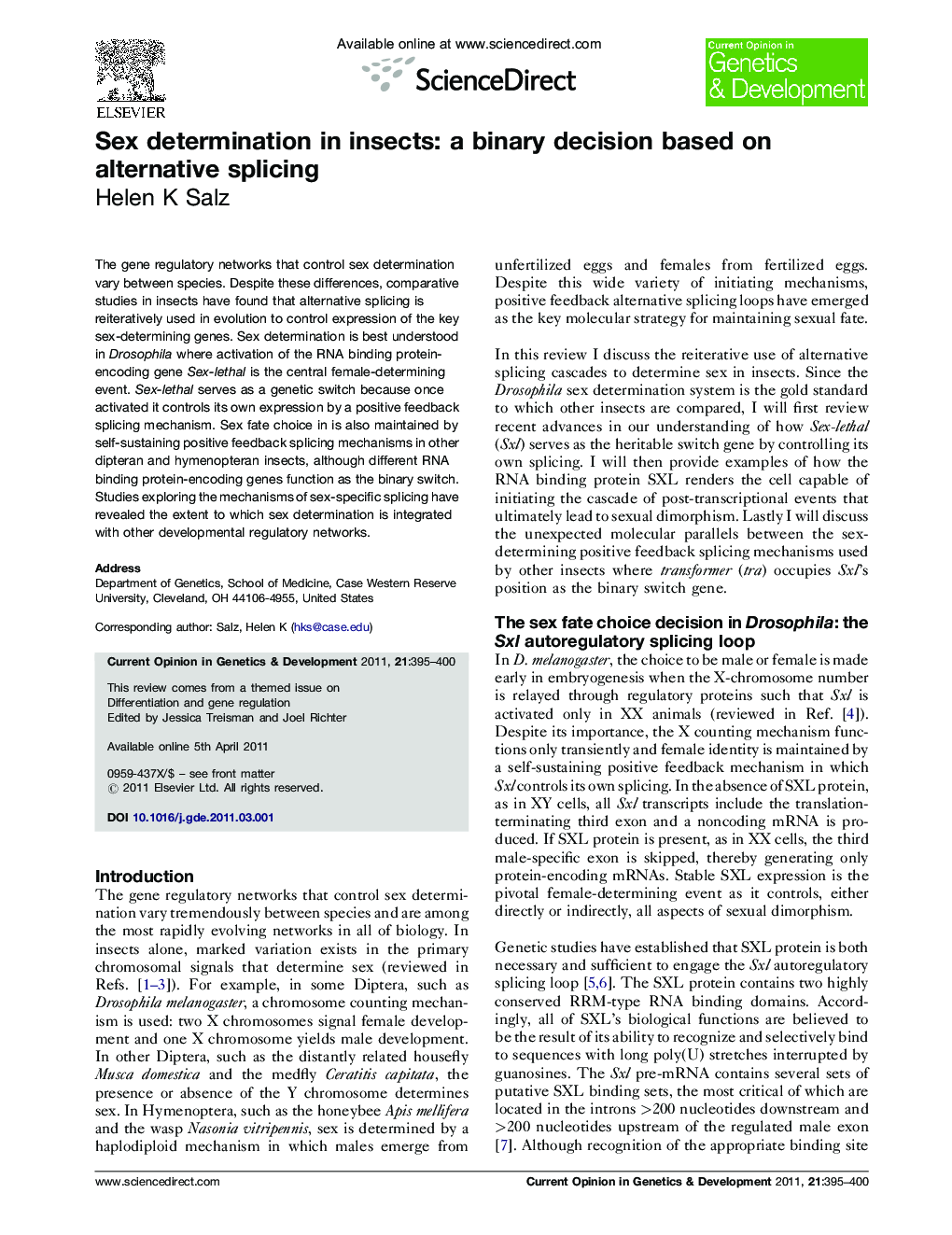| Article ID | Journal | Published Year | Pages | File Type |
|---|---|---|---|---|
| 2784971 | Current Opinion in Genetics & Development | 2011 | 6 Pages |
The gene regulatory networks that control sex determination vary between species. Despite these differences, comparative studies in insects have found that alternative splicing is reiteratively used in evolution to control expression of the key sex-determining genes. Sex determination is best understood in Drosophila where activation of the RNA binding protein-encoding gene Sex-lethal is the central female-determining event. Sex-lethal serves as a genetic switch because once activated it controls its own expression by a positive feedback splicing mechanism. Sex fate choice in is also maintained by self-sustaining positive feedback splicing mechanisms in other dipteran and hymenopteran insects, although different RNA binding protein-encoding genes function as the binary switch. Studies exploring the mechanisms of sex-specific splicing have revealed the extent to which sex determination is integrated with other developmental regulatory networks.
► Insects use alternative splicing to control sex-specific gene regulatory networks. ► Sex fate choice is maintained by self-sustaining positive feedback splicing loops. ► Sex determination is tightly integrated with other developmental regulatory networks.
